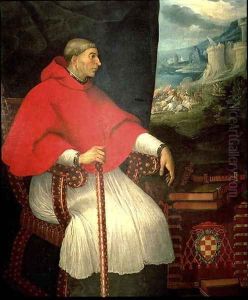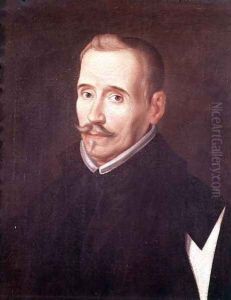Eugenio Caxes (Caxesi or Caxete) Paintings
Eugenio Caxes, also known as Eugenio Caxesi or Caxete, was a significant figure in the realm of Spanish Baroque painting. Born in 1577 in Rome, Italy, to Patricio Caxes, an esteemed painter from Arezzo, Eugenio's early life was steeped in an artistic environment that was crucial in shaping his future career. Despite his Italian origins, Eugenio Caxes's professional life and contributions are predominantly linked to Spain, where his family moved during his childhood. This relocation was instrumental in aligning Caxes with the Spanish school of painting, where he would leave a lasting impact.
Caxes's career flourished in Madrid, where he became a favored artist at the court of King Philip III. His work was profoundly influenced by the prevailing Baroque sensibilities of the time, characterized by dramatic expression, rich colors, and intense light and shadow contrasts. He was adept in religious and historical scenes, often imbued with a dynamic vitality that was characteristic of the Baroque movement. Among his notable commissions were the decorations for the Madrid Alcazar and the Pardo Palace, which unfortunately were destroyed in the fire of 1734, erasing much of his contributions to these royal residences.
In 1612, Caxes married Luisa de Riaño, a painter and the daughter of Antonio de Riaño, a royal treasury official. This union further cemented his ties and status within the Spanish court. He succeeded his father as the director of the royal painting workshop, a position that allowed him to influence the artistic direction at the court and mentor future generations of Spanish painters. His role in the royal workshop underscored his significance in the transmission of Italian Renaissance and Baroque influences into the Spanish painting tradition.
Eugenio Caxes's death in 1642 marked the end of an era that bridged the Renaissance's classical influences with the Baroque's emotive expressiveness. His legacy, although somewhat overshadowed by more renowned contemporaries, remains an essential part of the study of Spanish Baroque art. His contributions are preserved in several churches and collections in Spain, offering insight into the stylistic transitions and cultural exchanges between Italy and Spain during a pivotal period in European art history.

